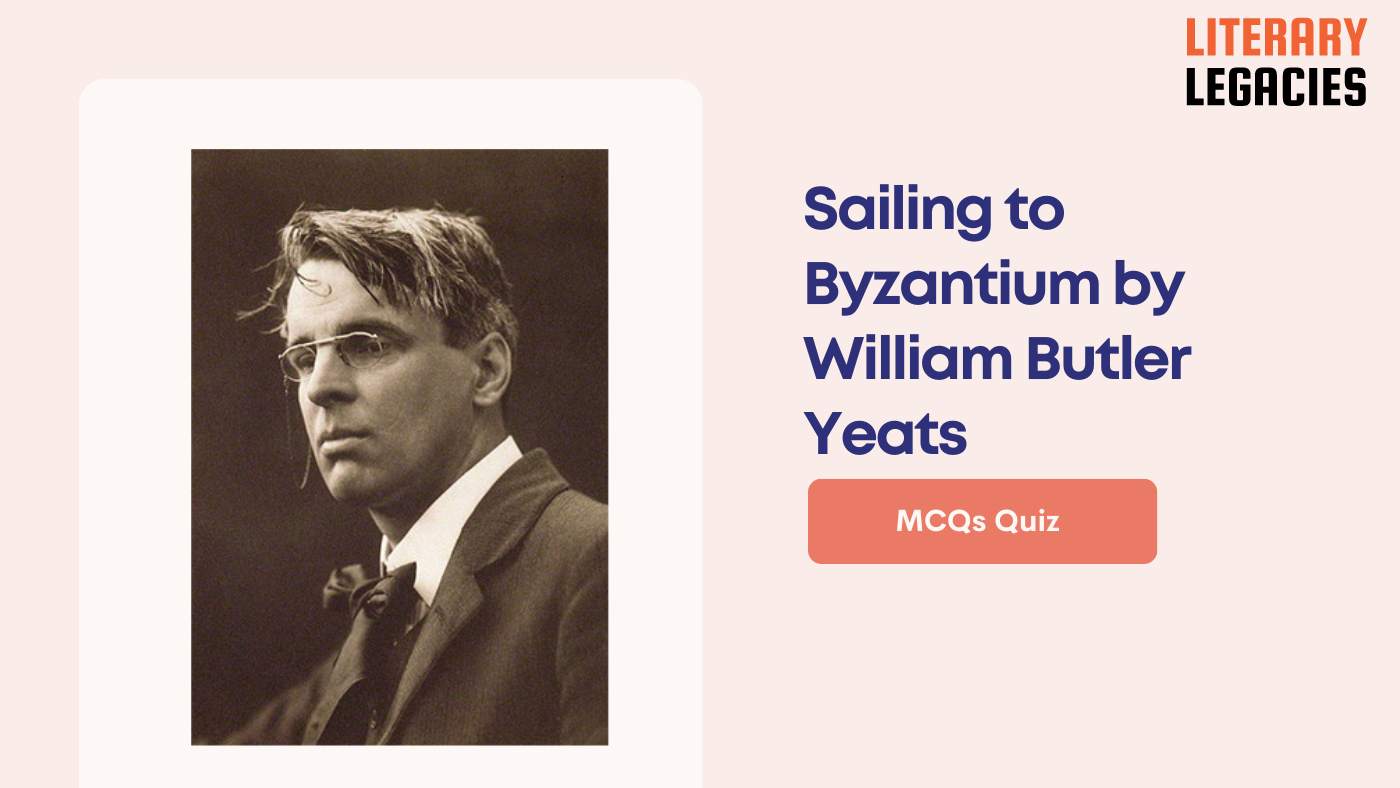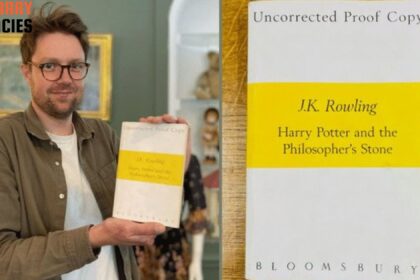1. What is the sentiment of the speaker towards the ‘country for young men’?
A. Nostalgic and romantic
B. Hopeful and optimistic
C. Disdainful and critical
D. Indifferent and neutral
Answer: Disdainful and critical (C)
The speaker describes the country as being full of youth and life, which implies a sense of disdain towards the old.
2. What is the significance of the ‘sensual music’ in the poem?
A. It is a symbol of the neglect of the old
B. It is a metaphor for the joy of youth
C. It is a celebration of the beauty of nature
D. It is a representation of the speaker’s longing for the past
Answer: It is a symbol of the neglect of the old (A)
The ‘sensual music’ is a symbol of the world that neglects the old.
3. What does the speaker mean by ‘monuments of unageing intellect’?
A. The young people who are full of life
B. The old people who are wise and intelligent
C. The works of art and literature
D. The buildings and architecture of the city
Answer: The old people who are wise and intelligent (B)
The ‘monuments of unageing intellect’ refer to the old people who are wise and intelligent.
4. What is the speaker’s desire in the poem?
A. To be free from the constraints of the natural world
B. To be reunited with his loved ones
C. To be remembered as a great poet
D. To be young again
Answer: To be free from the constraints of the natural world (A)
The speaker desires to be free from the constraints of the natural world and to be gathered ‘Into the artifice of eternity’.
5. What is the significance of Byzantium in the poem?
A. It is a place of eternal youth and beauty
B. It is a city of gold and wealth
C. It is a city of art and architecture
D. It is a place of spiritual awakening and enlightenment
Answer: It is a place of spiritual awakening and enlightenment (D)
Byzantium is a place of spiritual awakening and enlightenment, where the speaker hopes to find ‘singing-masters’ for his soul.
6. What is the symbolism of the ‘tattered coat upon a stick’?
A. It is a symbol of the beauty of old age
B. It is a symbol of the neglect of the old
C. It is a representation of the fragility of human life
D. It is a metaphor for the decline of civilization
Answer: It is a symbol of the neglect of the old (B)
The ‘tattered coat upon a stick’ is a symbol of the neglect of the old.
7. What is the speaker’s attitude towards his own heart?
A. He is proud of its strength and courage
B. He is indifferent to its emotions and desires
C. He is grateful for its wisdom and guidance
D. He is ashamed of its weakness and desire
Answer: He is ashamed of its weakness and desire (D)
The speaker says his heart ‘knows not what it is’ and is ‘sick with desire’, implying a sense of shame and weakness.
8. What is the significance of the ‘goldsmiths’ in the poem?
A. They are masters of spiritual awakening
B. They are skilled craftsmen who create intricate objects
C. They are creators of beautiful art and architecture
D. They are poets and writers of great literature
Answer: They are skilled craftsmen who create intricate objects (B)
The ‘goldsmiths’ are skilled craftsmen who create intricate objects, such as the singing bird made of hammered gold.
9. What is the poem’s structure and rhyme scheme?
A. It is written in free verse with no rhyme scheme
B. It is written in blank verse with no rhythm or rhyme
C. It is written in heroic couplets with a consistent rhyme scheme
D. It is written in iambic pentameter with an ABABABCC rhyme scheme
Answer: It is written in iambic pentameter with an ABABABCC rhyme scheme (D)
The poem is written in iambic pentameter with an ABABABCC rhyme scheme.
10. What is the overall tone of the poem?
A. It is hopeful and optimistic
B. It is nostalgic and melancholic
C. It is reflective and contemplative
D. It is critical and ironic
Answer: It is nostalgic and melancholic (B)
The overall tone of the poem is nostalgic and melancholic, with a sense of longing for eternity.
11. What is the central theme of Yeats’s poem ‘Sailing to Byzantium’?
A. The beauty of nature
B. The agony of old age and the quest for eternal life
C. The importance of travel in self-discovery
D. The power of artificial creations over natural ones
Answer: The agony of old age and the quest for eternal life (B)
The poem explores the struggle of old age and the desire to transcend mortality.
12. In which year was the poem ‘Sailing to Byzantium’ written?
A. 1914
B. 1928
C. 1899
D. 1926
Answer: 1926 (D)
The poem was written in 1926 and later included in Yeats’s collection ‘The Tower’ in 1928.
13. What is the poet’s desired destination in the poem?
A. Greece
B. Byzantium
C. Turkey
D. Ireland
Answer: Byzantium (B)
Byzantium, a city famous for its gold mosaics, represents a place where the poet can transcend mortality.
14. What is the significance of the ‘singing-masters’ in the poem?
A. They are the rulers of Byzantium
B. They are the poet’s friends
C. They are the spiritual guides who can help the poet’s soul
D. They are the inhabitants of the golden tree
Answer: They are the spiritual guides who can help the poet’s soul (C)
The ‘singing-masters’ are the sages in the gold mosaics who can help the poet’s soul to sing.
15. What is the poet’s ultimate desire in the poem?
A. To return to his youth
B. To exist in the ‘artifice of eternity’
C. To become a natural part of the environment
D. To visit the city of Byzantium
Answer: To exist in the ‘artifice of eternity’ (B)
The poet desires to transcend mortality and exist in a state of timelessness.
16. What is the symbol of the artificial and perfect in the poem?
A. The human body
B. The golden bird
C. The city of Byzantium
D. The natural world
Answer: The golden bird (B)
The golden bird represents the artificial and perfect, which is a recurring theme in Yeats’s poetry.
17. What is the connection between the poem ‘Sailing to Byzantium’ and Keats’s ‘Ode to a Nightingale’?
A. Both poems are about old age
B. Both poems are about travel
C. Yeats’s poem is a rebuttal to Keats’s poem
D. Both poems are about nature
Answer: Yeats’s poem is a rebuttal to Keats’s poem (C)
Yeats’s poem is a response to Keats’s idea that the nightingale is immortal and unaffected by death.
18. What is the significance of the ‘dying animal’ in the poem?
A. The city of Byzantium
B. The natural world
C. The golden bird
D. The poet’s body
Answer: The poet’s body (D)
The ‘dying animal’ refers to the poet’s body, which is subject to decay and mortality.
19. Why is Byzantium significant to the poet?
A. It offered the ideal environment for the artist
B. It is a place of natural beauty
C. It is a place of spiritual enlightenment
D. It is a beautiful city
Answer: It offered the ideal environment for the artist (A)
The poet sees Byzantium as an ideal environment for the artist, where he can transcend mortality.
20. What is the tone of the poem ‘Sailing to Byzantium’?
A. Nostalgic and reminiscent
B. Hopeful and aspirational
C. Celebratory and joyful
D. Melancholic and despairing
Answer: Hopeful and aspirational (B)
The poem expresses a sense of hope and aspiration for transcendence and eternal life.
21. What was Yeats’s view on the role of fate in history?
A. It is determined by a higher power.
B. It is a random sequence of events.
C. It is influenced by mythology.
D. It is shaped by human actions.
Answer: It is determined by a higher power. (A)
Yeats believed that history was determined by fate.
22. What influenced Yeats’s spiritual and philosophical system?
A. Mythology, Theosophy, spiritualism, philosophy, and the occult
B. Greek mythology and ancient history
C. Eastern philosophy and mysticism
D. Christianity and science
Answer: Mythology, Theosophy, spiritualism, philosophy, and the occult (A)
Yeats was influenced by a variety of spiritual and philosophical systems.
23. What did Yeats use to map out the development and reincarnation of the soul?
A. A complex system of alchemy
B. A system of astrology
C. A set of tarot cards
D. The image of interlocking gyres
Answer: The image of interlocking gyres (D)
Yeats developed a unique spiritual system that included the use of interlocking gyres.
24. How does the divine interact with humanity in Yeats’s poetry?
A. Through a divine voice that speaks to individuals
B. Through miraculous events
C. Through moments of human and divine interaction
D. Through a system of rewards and punishments
Answer: Through moments of human and divine interaction (C)
The divine interacts with humanity in moments of interaction in Yeats’s poetry.
25. What tone permeates Yeats’s poems that describe situations of human and divine interaction?
A. One of joy and celebration
B. One of historically determined inevitability
C. One of uncertainty and doubt
D. One of sadness and despair
Answer: One of historically determined inevitability (B)
Yeats’s poems often convey a sense of historical determinism.
26. What role does the divine play in Yeats’s poetry?
A. It is a metaphor for the human psyche
B. It is a way to describe the natural world
C. It is a representation of good and evil
D. It is a symbol of fate and destiny
Answer: It is a symbol of fate and destiny (D)
The divine signals the role of fate in determining the course of history.
27. How does Yeats’s system of spirituality view the concept of reincarnation?
A. It is a part of a complex system that involves interlocking gyres
B. It is not a part of his spiritual system
C. It is a literal, physical process
D. It is a metaphor for personal growth and development
Answer: It is a part of a complex system that involves interlocking gyres (A)
Yeats’s system of spirituality includes a complex system of reincarnation.
28. What is the result of the interaction between the human and divine in Yeats’s poetry?
A. A sense of chaos and disorder
B. A sense of determination and fate
C. A sense of hope and salvation
D. A sense of confusion and ambiguity
Answer: A sense of determination and fate (B)
The interaction between the human and divine reveals the plan of fate.



